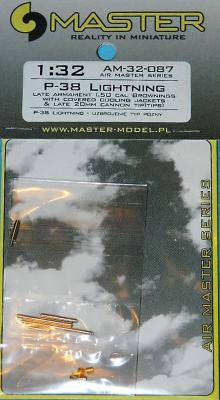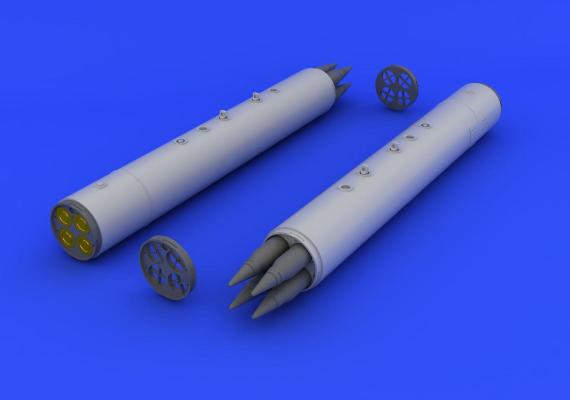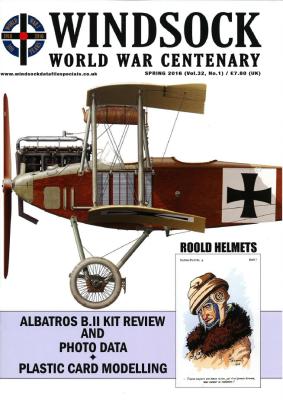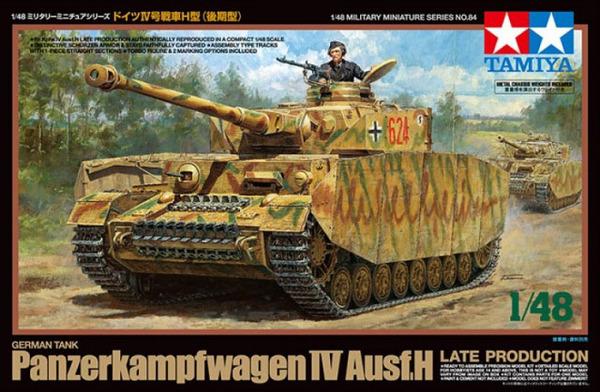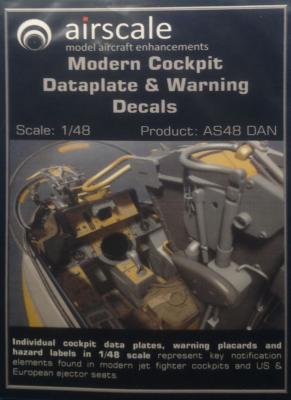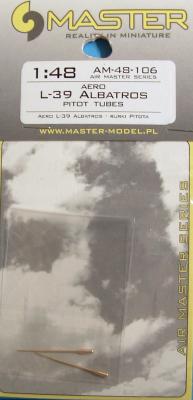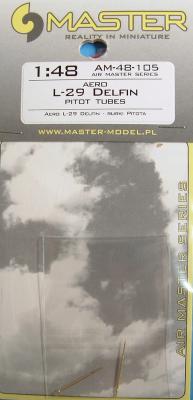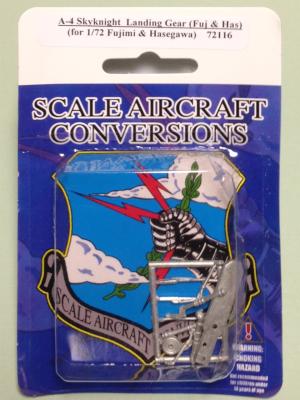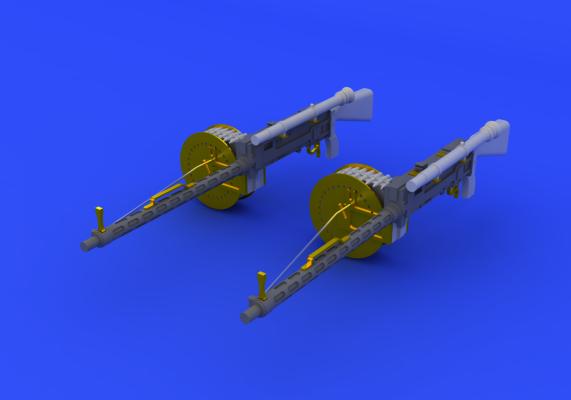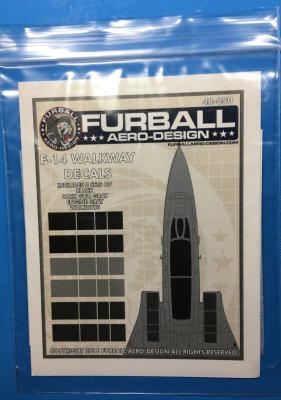Master Models once again provides IPMS USA with examples of machine-shop excellence… We are extremely thankful to Piotr for providing examples of his work to review.
What's New
Eduard continues their additions to the 1/32 scale line of armament with a pair of resin Lau-10 Zuni Rocket pods. These pods carried our 5” rockets with folding fins. There are multiple warhead configurations for these rockets. This set comes with one option which look s like standard high explosive. The set comes with fourteen perfectly cast resin pieces, a small photoetch fret and a set of decals for both pods.
Prep work is pretty straightforward as casting blocks need removed from the main body, the front and back body ends and the rocket heads. Cast into the back body end are representations of the end of the rocket and its find. There are attached with super glue and fit is good. One thing to note before committing to paint is that the resin does need a good scrubbing with soap, etc. to get rid of mold release. I added the ends, washed and primed the parts with Alclad gray primer.
The Spring 2016 edition of Windsock World War Centenary is the first edition of Volume 32. This edition’s cover story features an enlarged version of Ronny Barr’s Albatros B.II 675/15 side profile.
The Wingnut Wings Albatros B.II is covered in the Kit Reviews section along with period photos from the Harry Woodman collection. The third in a series by the late Harry Woodman focuses on an unpublished update to his rare Scale Model Aircraft in Plastic Card that is a must have. This feature provides updates to the original and is supplemented with plenty of archival material and color photos.
Tamiya’s ever growing line of 1/48 armor kits has added one of the most produced armored figting vehicles of the Second World War, the Panzerkampfwagon IV, with this release being the ausf H version. The kit is molded in Tamiya’s standard desert yellow plastic. The tracks are plastic link and length type, and the only multi-media in the kit is two steel weights for the lower hull. Originally Tamiya 1/48 armor kits came with die cast metal lower hulls, but that has been replaced with a plastic hull in this release, with the two weights being a compromise. There is no zimmerit texture on the hull parts, a necessity for a German armor kit of this time frame. Tamiya recommends either buying their zimmerit tools and applying your own, or using the self adhesive vinyl zimmerit that they produce. I chose the latter for my build.
Thank you Airscale Model Aircraft Enhancements for sending these excellent decals for review. Thank you to the IPMS Reviewer Corps for letting me review them! I am honored to contribute back to the scale-modeling community.
Airscale Model Aircraft Enhancements’ tagline is “High resolution cockpit detailing for aircraft modellers” and this decal sheet is an excellent example of their philosophy. A compact 3 1/16 x 2 1/8 inch (54 x 80 mm) sheet is richly populated with a wide variety of high-resolution modern jet aircraft data plates and warnings. All decals have minimal carrier film.
Master Model continues to provide delicate turned metal parts which not only provide greater detail closer to scale, but in the case of pitot tubes, are far more resilient during handling. For the modeler who chooses to take a model to a show or club meeting, indestructability is a consideration during the modeling process.
The MPM/Special Hobby 1/48 L-39 Albatros is back on the market after a long hiatus. The kit provides the aircraft’s two pitot tubes as separate moldings which are then glued to the leading edge of the wing. The pitot tubes are rather non-descript and require clean up to use. Master Model fortunately has released this set of two tubes as replacements. These are nicely turned pieces with all of the subtlety of the real tube. To use them, the modeler just needs to drill a hole in the wing after assembly of the wing and slide the tubes into the hole when the model is finished. There is plenty of base stock for attachment to the wing.
Master Model continues to provide delicate turned metal parts which not only provide greater detail closer to scale, but in the case of pitot tubes, are far more resilient during handling. For the modeler who chooses to take a model to a show or club meeting, indestructability is a consideration during the modeling process.
This set is provides replacement gear for either the Hasegawa or the Fujimi A-4 kits. As I had a number of the Fujimi A-4 kits, I selected the TA-4J kit for installation. In comparing the metal parts to the kit parts, the set includes two different nose gear struts; one matches the Fujimi strut, so presumably the other is intended for the Hasegawa kit.
A little background. The LMG Model MG 14/17 machine gun was a 7.92mm gun used on aircraft and Zeppelin in WWI. The 17 designation means that the gun was the 1917 version of this particular weapon. MG-14/17's were used very widely on German multi-seat aircraft throughout 1917 and 1918, particularly as the weapon for the rear gunner/observer on two seat planes.
Eduard has produced a resin and photoetch replacement for kit parts representing this gun. Inside the package, you get parts for two guns. The resin parts consist of the stock, the gun itself, the ammo drum and the sight. The photoetch parts consist of the gun sight, handle, the sides of the ammo drum, the supports for the gun sight and the trigger assembly.
Thank you Furball Aero-Design for sending these excellent decals for review. Thank you to the IPMS Reviewer Corps for letting me review them! I am honored to contribute back to the scale-modeling community.
Six F-14 sets of over-the-intake walkways are provided on a 4 x 4 ¼ inch (100 x 110 mm) sheet. The decals have minimal carrier film. There are two sets in each of three colors: black, dark gull gray, and engine gray. Decal opacity is excellent. Test decals worked very well with Microscale solutions and plain water. The decals are thin and durable, snugging down nicely without coaxing. I did not try stronger solutions like Solvaset, but I do not believe that such solutions would be needed. In short, these simple decals work, and work well.

